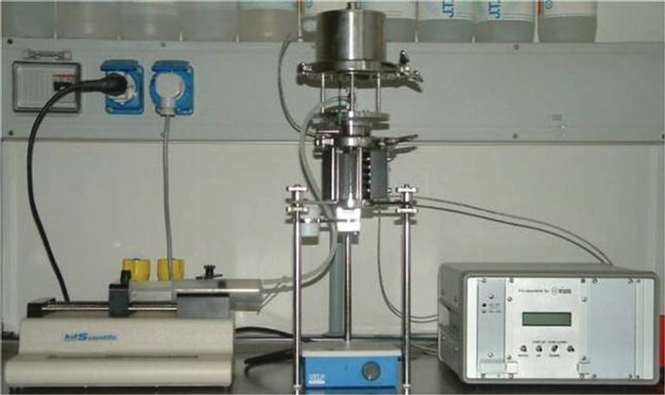- Home
- Blog
- News
- Basics
- Sources
- Agencies, Regulatory & Organisations
- CERSI Excipients Browser
- Excipient Report
- Excipient DMF List
- EXCiPACT Certified Companies
- Excipient Documentation
- Excipient EINECS Numbers
- Excipient E-Numbers
- FDA Inactive Ingredient List
- FDA GRAS Substances (SCOGS) Database
- IPEC Americas
- USP - U.S. Pharmacopeia
- Definitions
- Whitepapers / Publications
- Supplier
- Services
- Media
- Events
- 1st pharmaexcipients Poster Award
- Event Calendar
- Events featured by pharma-excipients
- 4th Annual Formulation & Drug Delivery Congress
- DDF Summit
- ExcipientFest Americas
- ExcipientFest Asia
- Global CompliancePanel
- International Conference and Exhibition on Pharmaceutics & Novel Drug Delivery Systems
- Formulation & Drug Delivery USA Congress
- Laboratory Medicine 2018
- Making Pharmaceuticals Europe
- Making Pharmaceuticals Exhibition
- Pharma Integrates
- PharmaExcipients China @CPhI China
- TTC Technology Training Center
- Jobs
- Online Sourcing
- Contact
03. April 2018
Overview Webinar Title: Streamlined Manufacture of Modified Release Matrix Tablets via Direct Compression Date: Tuesday, April 10, 2018 Time: 11:00 AM Eastern Daylight Time Duration: 1 hour
04. September 2017
Abstract Recently, different technologies have been used to transform active pharmaceutical ingredients (APIs) into new dosage forms. Engineered drug delivery systems may modify biopharmaceutical properties of the API achieving either immediate or delayed release according to specific therapeutic needs. Particularly, preprogrammed release of oral formulations delivering the drug at expected times may be useful in chronotherapy of early morning pathologies. The conventional approach when dealing...
29. April 2017
Abstract Thoughtfully designed early clinical formulations not only meet the needs of the study at hand and inform the development of the commercial product, but can influence the direction of the clinical program as well as provide further guidance to potential backups still in exploratory stages. This chapter focuses on the various types of early clinical formulations, why they are developed, and how the preclinical formulation space helps to guide initial clinical formulation selection....
06. November 2016
Abstract Herbal medicines are recognized as an effective treatment of common diseases, mainly associated with oxidative stress. Therefore developing drug delivery systems of these biological active ingredients are gaining interest. Parsley (Petroselinum crispum L.) is a well-known culinary herb and its leaf contains high amount of apigenin, therefore it is suitable as a natural source of this flavonoid. Apigenin possess many health effects such as antioxidant, anti-inflammatory and anticancer...
04. July 2016
Aim: The aim of this work is development and evaluation of chlorhexidine medicated chewing gums by different methods and to study the influence of different plasticizers and methods on physicochemical parameters and in vitro drug release profile. Materials and Methods: Chlorhexidine is an antibacterial agent used for management of tooth decay. The formulations are prepared with varying concentrations of plasticizers and synthetic gum base by different methods such as direct compression and...
13. June 2016
Pectin was chemically modified with different amounts of trisodium trimetaphosphate (STMP) in aqueous solution (pH = 12), thereby giving a material with reduced water solubility. The physiochemical characterization of this new material was carried out through Fourier transform infrared and thermogravimetric analyses. Phosphated pectin (Pect-STMP) together with prebiotic (oligosaccharide) were incorporated into an aqueous dispersion of polymethacrylate (Eudragit RS 30 D) in order to obtain...
20. February 2016
Extrusion spheronization is the widely used method by which the pellets are formulated. Pellets have certain advantages in the development of modified release dosage forms, Because of their regular shape and size they are suitable for coating and encapsulation processes, In addition, pellets may sometimes improve the bioavailability, reduce the risk of dose dumping and decrease local irritations in the gastrointestinal tract. Ideal pelletizing aid for this process is MCC as it possesses...
09. January 2016
In this work, alginate, alginate-pectin and alginate-hydroxypropylcellulose pellets were produced by ionotropic gelation and characterized. Ibuprofen was selected as model drug; it was suspended in the polymeric solution in crystalline form or dissolved in a self-emulsifying phase and then dispersed into the polymeric solution. More
13. November 2015
09. September 2015
The aim of this work was to obtain bio-based polyurethane composites using biocomponents such as, bio-glycol, modified natural oil-based polyol, and microcrystalline cellulose (MCC). The prepolymer method was used to prepare the bio-based polyurethane matrix. More



